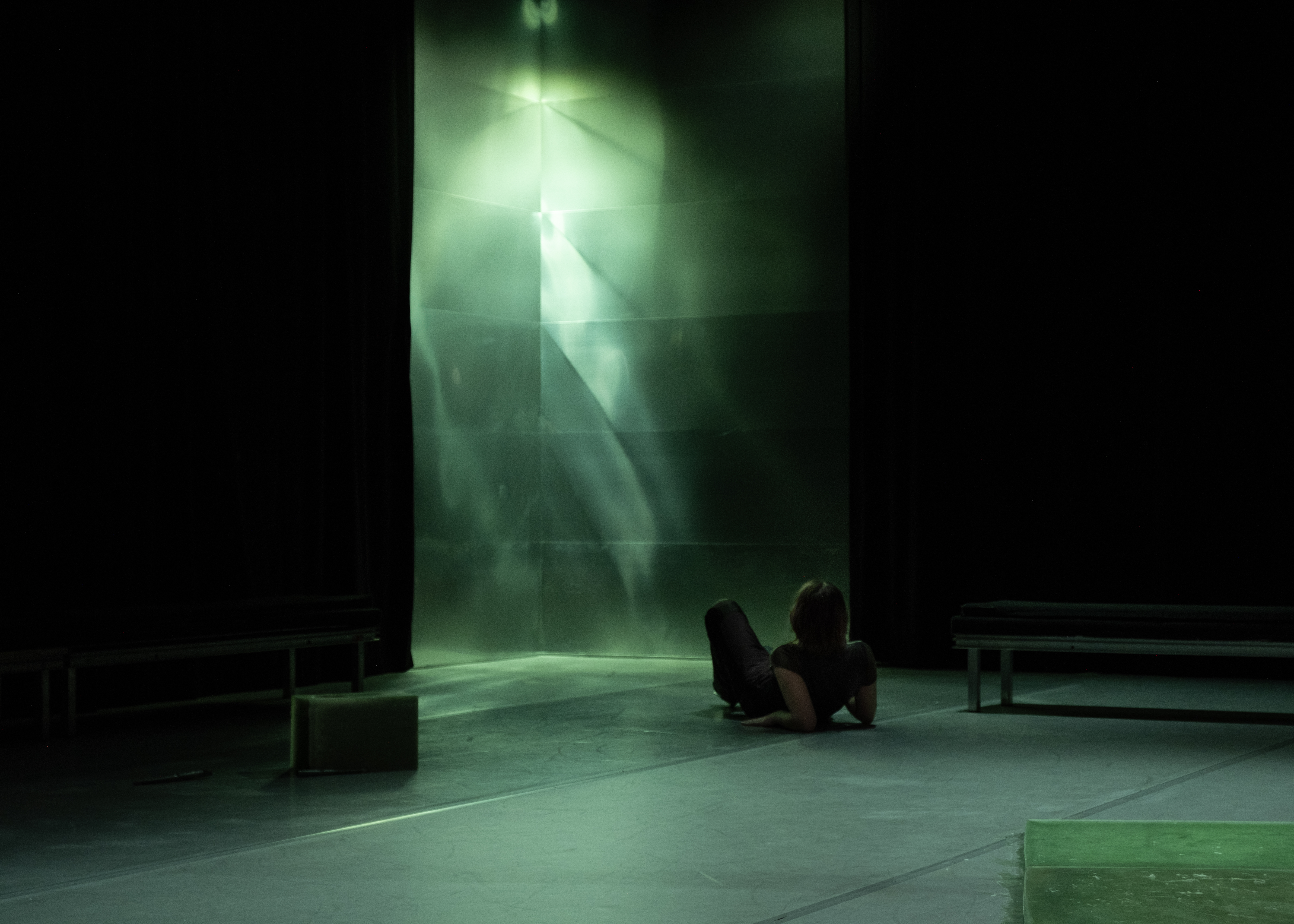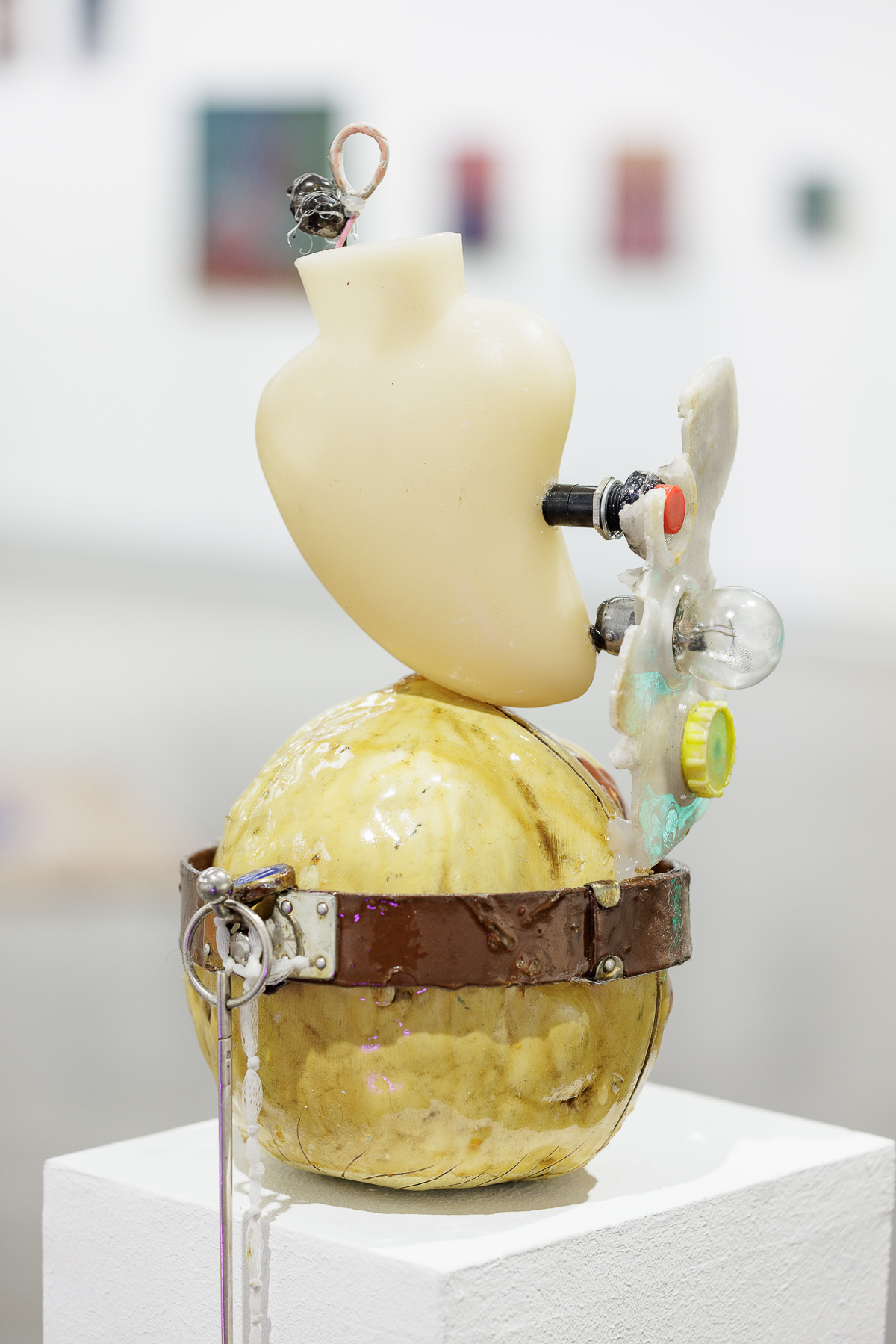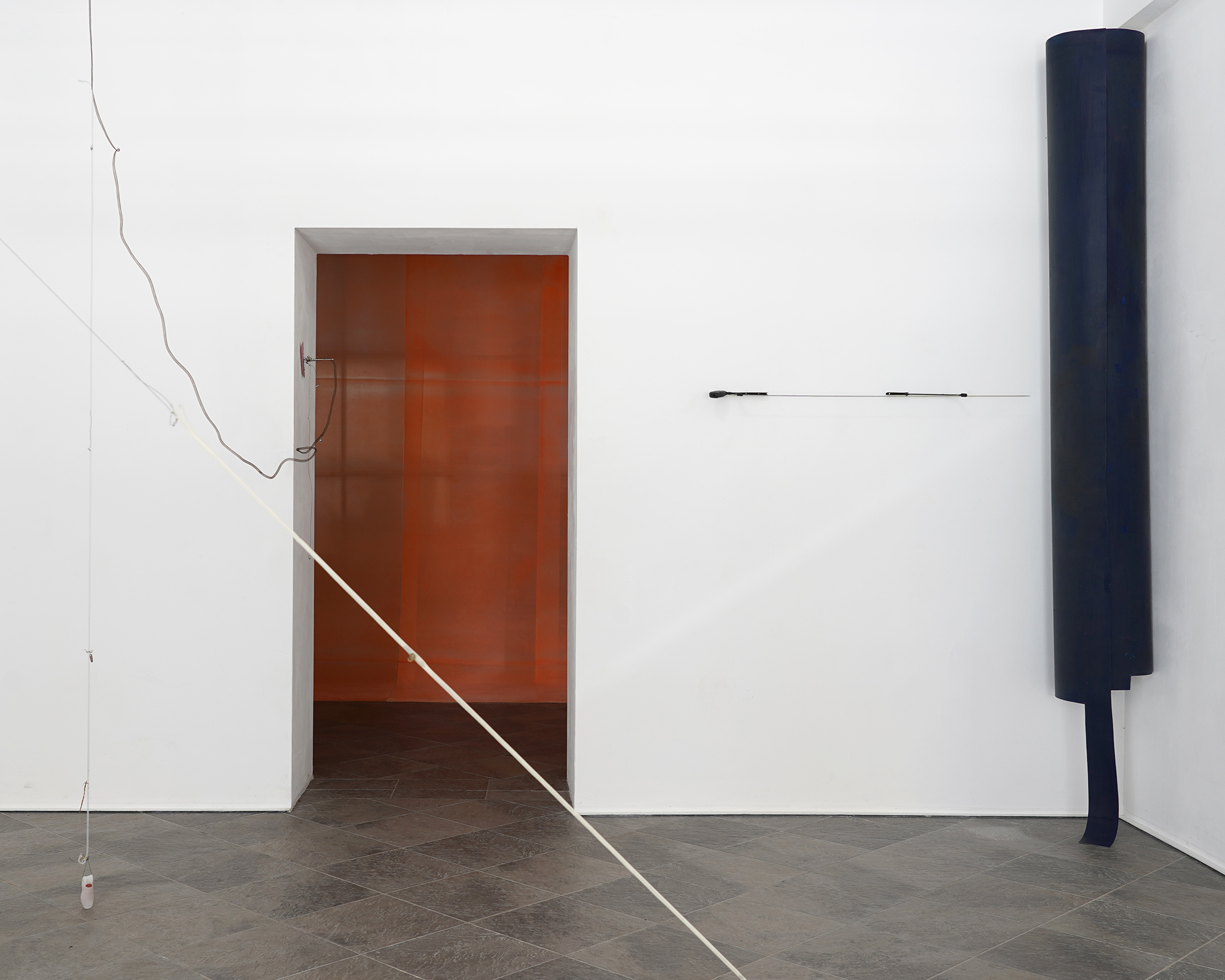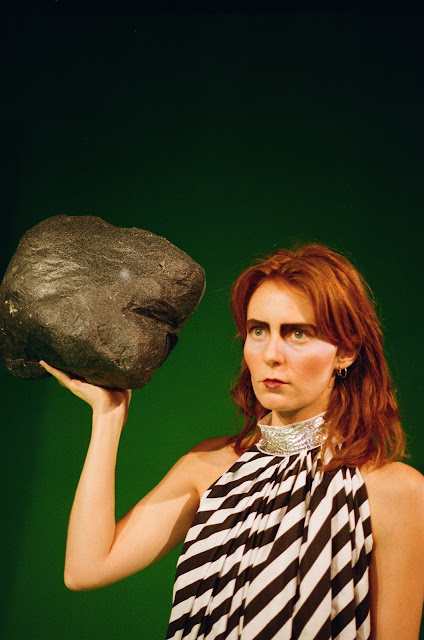Hearth by Magdalena Forster - individual mythologies
Hearth is a solo performance in which Forster establishes connections through engaged objects, drawing the audience into a world that spans from subtle, fleeting details to vast interconnections. The performance begins in the small – in touch, in sound, in gesture – and unfolds into a collective, spatial experience, a vessel that includes us all. Metal is at the center of this performance – not just as a material, but as a living, breathing presence. In collaboration with the forge of the performer’s brother, Simon Forster, in Braunau am Inn, objects made from iron and stainless steel were created, such as shoe prosthetics, iron discs, instruments, and historical ventilation systems used in blacksmithing.
These objects undergo an alchemical transformation, offering a non-binary approach to thoughts and states. The approach to the properties of material is always seen as a possibility, not a given that cannot be shaped. This is further enhanced by the wax objects of Lukas Koetz in subtle, toxic green tones, which recall a small patch of land somewhere in Austria and were cast in situ. In addition, Georgieva's sound composition for Hearth connects human breath movements with metallic vibrations, creating a poetic and almost sacred resonance. The performance features diverse sound sources, alternating between live organ pipes, voice, and composed elements. This interplay creates a sense of movement and transformation within the space, blending sound, body, and memory.
The dramaturgical structure of Hearth shows that Forster’s work can be understood not only as performance but as curatorial thinking: noting, underlying in relationships and tensions. This approach is reminiscent of Harald Szeemann, whose exhibitions such as When Attitudes Become Form (1969) broke the conventions of exhibiting and curating. Like Szeemann, Forster gives materials and spaces an active role in their performance, connecting to the idea of Gesamtkunstwerk, where contemporary art's influence manifests in an associative chain, but each element in the space can also stand on its own.
Thus, there is a struggle between the collective and the individual, along with its mythological exaltation. The dramaturgy of these forces is carefully crafted by Mar Szydłowska and shaped into sequences commonly found in metalworking, as well as movement scores between the wrist, hands and arms, balancing tension and pressure. The discharge of these scores, which are part of the vocabulary of the performer, is expressed through vibration (laryngeal resonance), strikes, trembling, and leads to playfulness—a generosity in desire.
There are moments when this lightness transitions into a flirtation with the audience, and situations where the body language fluctuates between limitation, dominance, and something more assertive—much like the folk gods Pan who, as hybrid of man and goat, use their flutes to both comfort in pain and seduce. This connection to nature is reflected in the intense relationship between body and material—a flicker inviting us into a world of somatic resonance, dysphoria, relationships and love.
Hearth premiere was in January in Tanzquartier Vienna
For further Information and Credits visit: Here
Image Credit: Jana Van Brussel










